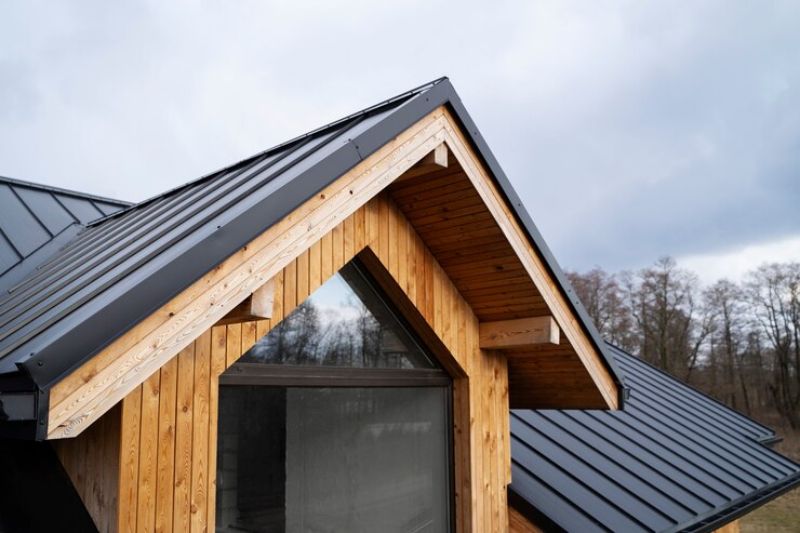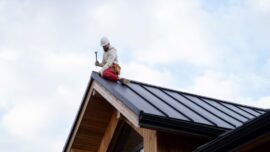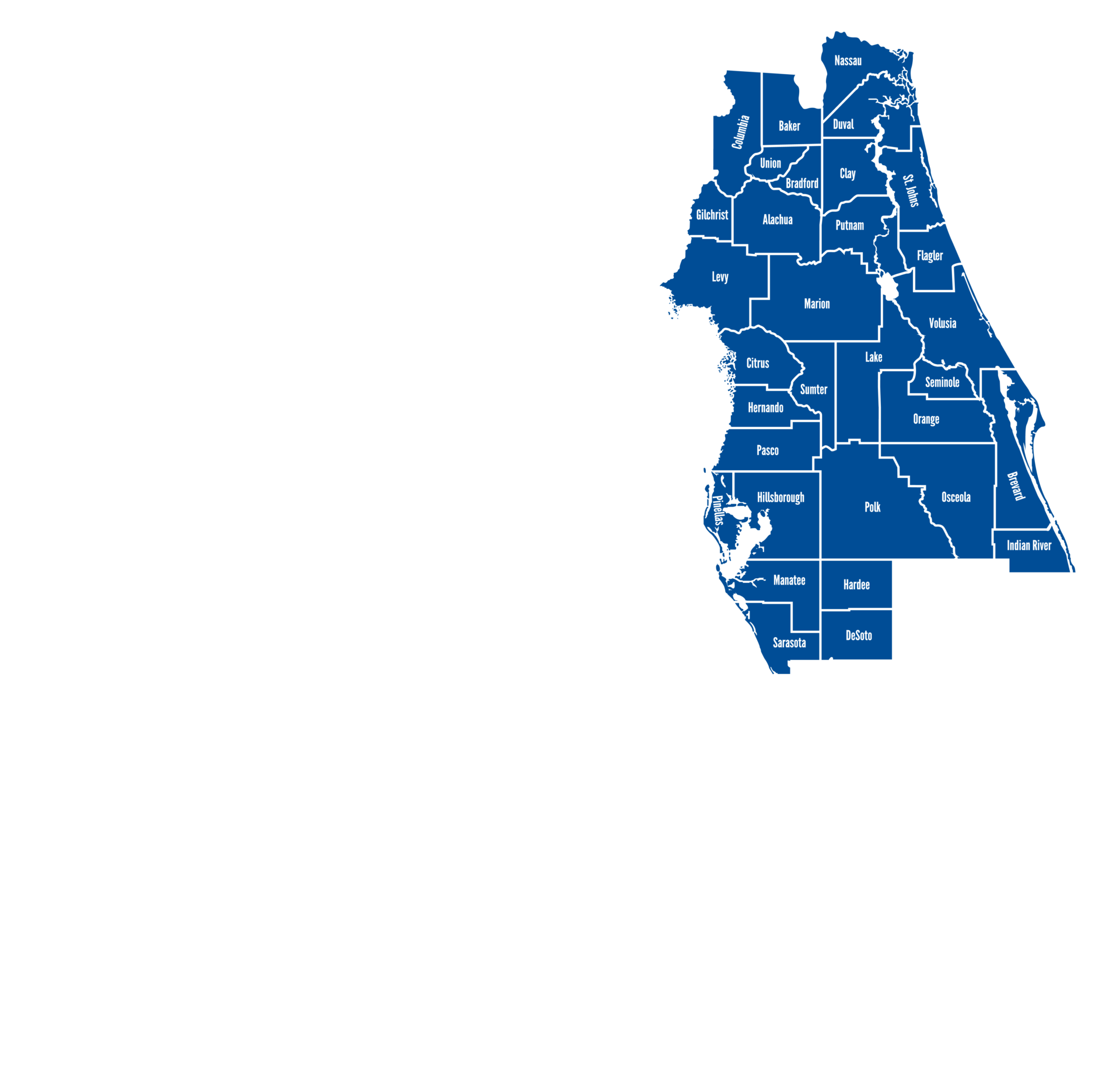
Roofing Terms and Definitions: Essential Roofing Terminology You Must Understand
A well-informed homeowner or professional in the construction industry recognizes the paramount importance of understanding roofing terminology. In the intricate world of roofing, being well-versed in the language is not merely an option but a necessity. This knowledge serves as the foundation for effective communication and sound decision-making, whether you’re planning a roof repair, installation, or simply assessing your roofing needs.
In this blog, we will delve into the crucial roofing terms that underpin the roofing process. By the end of this article, you will have the tools needed to navigate the roofing landscape confidently and make informed choices for your projects.
Roofing Structure and Components
The roofing structure consists of various critical components. Let’s explore key roofing terms such as roof decking (roof sheathing), roof flashing, roof underlayment, ice and water shield, rakes, eaves, and roof facets to better understand their roles in a durable roofing system.
Roof Decking (Roof Sheathing)
Roof decking, a vital component of roofing structures, refers to the supportive base layer beneath roofing materials. Typically made of plywood or OSB, it provides stability and strength to the roof. This crucial layer ensures a solid foundation for shingles, tiles, or other roofing materials, enhancing your roof’s durability.
Roof Flashing
Roof flashing is a critical component in preventing leaks. It’s typically made of metal and is placed in vulnerable areas like roof transitions, valleys, and around chimneys to redirect water away from potential trouble spots. Properly installed flashing is essential to maintain a watertight roofing system.
Roof Underlayment
Roof underlayment acts as an additional barrier against moisture and aids in protecting the decking from water infiltration. Typically made of felt or synthetic materials, it is installed between the decking and roofing materials, adding an extra layer of defense against leaks, making it a critical element in your roofing system.
Ice and Water Shield
An ice and water shield is crucial in regions prone to ice dams and heavy snowfall. It’s a self-adhesive membrane that adds a strong barrier against water infiltration. Installed on the eaves, it helps prevent water from seeping beneath shingles, ultimately safeguarding your roofing structure.
Rakes and Eaves
Rakes are the inclined edges of your roof, while eaves are the horizontal overhangs. These roofing components play a role in directing water away from your roof and into the gutters. Proper maintenance and protection of rakes and eaves are essential to prevent water damage and maintain your roofing system’s integrity.
Roof Facets
Roof facets are the distinct sections or slopes of your roof, each with its own set of components. These facets can vary in size, shape, and orientation, depending on your roof’s design. Understanding the configuration and components of different facets is vital for effective roofing maintenance and repairs.
Roof Measurement and Estimation
The field of roofing is vast, encompassing various roofing terms and concepts. Here, we’ll delve into three essential roofing terms associated with measurement and estimation: Roofing square, prorated and non-prorated roofing costs, and roof valleys and hips.
Roofing Square
A Roofing square is a standard of measurement in the roofing industry, recognized by the National Roofing Contractors Association (NRCA). It’s equivalent to 100 square feet of roof area. Roofers use this unit to estimate the amount of roofing materials required for a project. Understanding this term is crucial for accurate roof measurement and estimation.
Prorated and Non-Prorated Roofing Costs
When it comes to roofing costs, you’ll often encounter prorated and non-prorated expenses. Prorated costs refer to expenses that are distributed over time, while non-prorated costs are fixed or one-time expenses. Knowing the difference between these two cost structures is essential for budgeting and understanding the financial aspects of roofing terms.
Roof Valleys and Hips
Roof valleys and hips are key elements in roof design. Valleys are the V-shaped intersections formed when two roof slopes meet, while hips are the external angles created by the intersection of two sloping roof sections. Proper installation and maintenance of these aspects are vital for a leak-free and durable roof.
Gable
A gable is a triangular structure at the end of a wall, situated between the edges of a sloping roof. Gables are common in many roof styles and serve both functional and aesthetic purposes. Understanding gables can help you assess the overall design and ventilation of your roof.
Roof Edging and Finishing
The roof edging and finishing components play a crucial role in the protection and aesthetics of your roofing system. There are three key roofing terms you should know when it comes to these elements:
Drip Edge
Drip edge is one of the essential roofing terms and components designed to prevent water from seeping underneath the roofing material. It’s typically installed along the edge of the roof and directs rainwater away from the fascia, preventing water damage and promoting proper drainage.
Fascia
The fascia is a horizontal board that runs along the border of the roof. It not only provides a clean, finished look to your roof but also serves as a crucial structural component, supporting the lower edge of the roof and the gutters.
Soffit
The soffit is the underside of the roof’s overhanging eaves. It not only adds to the visual appeal of your roof but also has a functional purpose by providing ventilation, which helps regulate temperature and moisture in your attic space.
Roofing Elements and Features

Roofing elements and features are essential components of any well-constructed roof. They contribute to the functionality, durability, and aesthetics of the structure. Here, we will explore some key elements and features of roofing terms, including dormers, starter shingles, roof pitch, caulk, and roof crickets.
Dormer
Dormers are architectural elements that protrude from a sloped roof. They serve both functional and aesthetic purposes. Dormers provide additional headroom and natural light to attic or upper-level spaces. They come in various styles and shapes, enhancing the overall design of the roof and the building.
Starter Shingles
Starter shingles are the first tier of shingles installed along the eaves of a roof. They play a crucial role in preventing water infiltration and securing the rest of the shingle layers. Starter shingles are designed to provide a clean, uniform appearance and to protect the roof’s edges from wind and moisture.
Roof Pitch
Roof pitch describes the steepness or slope of a roof. It is usually expressed as a ratio, such as 4:12, where the first number represents the vertical rise, and the second number indicates the horizontal run. The roof pitch affects the roof’s ability to shed water and its overall design. Different roof pitches are suitable for various climates and architectural styles.
Caulk
Caulk is a sealant utilized to fill gaps and cracks in roofing materials, preventing leaks and improving energy efficiency. It is vital for maintaining a watertight seal around roof penetrations comprising vents, chimneys, and skylights. Regular inspection and reapplication of caulk can help prolong the life of your roof.
Roof Cricket
A roof cricket is a ridge-shaped structure installed on the higher side of a chimney or other roof projection. It helps divert water away from these areas and prevents water from pooling or infiltrating the roof. Roof crickets are crucial for preventing water damage and ensuring the longevity of your roof.
Roofing Terms FAQs
What is the terminology for roofing?
Roofing terminology refers to the specialized words and phrases used in the roofing industry to describe various components, materials, and techniques related to roofs. Common roofing terms include eaves, shingles, flashing, underlayment, ridge vent, soffit, and more.
What are the areas of a roof called?
The main areas of a roof include the ridge (the highest point), the slope (the incline), the eaves (the edges), the soffit (the underside), the fascia (the front board), and the flashing (protective material around roof openings).
What are the four parts of a roof?
A typical roof consists of four primary components: the roof structure (rafters or trusses), the roof covering (shingles, tiles, metal, etc.), the roof underlayment (protective layer under the covering), and the roof ventilation (vents to regulate air circulation and temperature).
What is a roofing term that starts with S?
One common roofing term that starts with ‘S’ is “shingles.” Roof shingles are overlapping, individual elements typically made of asphalt, wood, metal, or other materials used to cover and protect the roof.
What is a roof-like covering called?
A roof-like covering is often referred to as a “canopy.” Canopies are structures, similar to roofs, that provide shelter and protection from the elements. Canopies can be found in various settings, including outdoor areas, walkways, and entrances.
Conclusion
Understanding the roofing terms is paramount for homeowners and construction professionals. It equips individuals with the knowledge needed for effective communication and informed decision-making in roofing projects. With a grasp of essential roofing terminology, you can navigate the roofing landscape confidently. To ensure the success of your roofing endeavors, whether it’s repairs, installations, or assessments, it’s vital to be fluent in these terms. For reliable roofing services, simply contact us at Covenant Roofing, and we’ll be your trusted partner in all your roofing needs.





